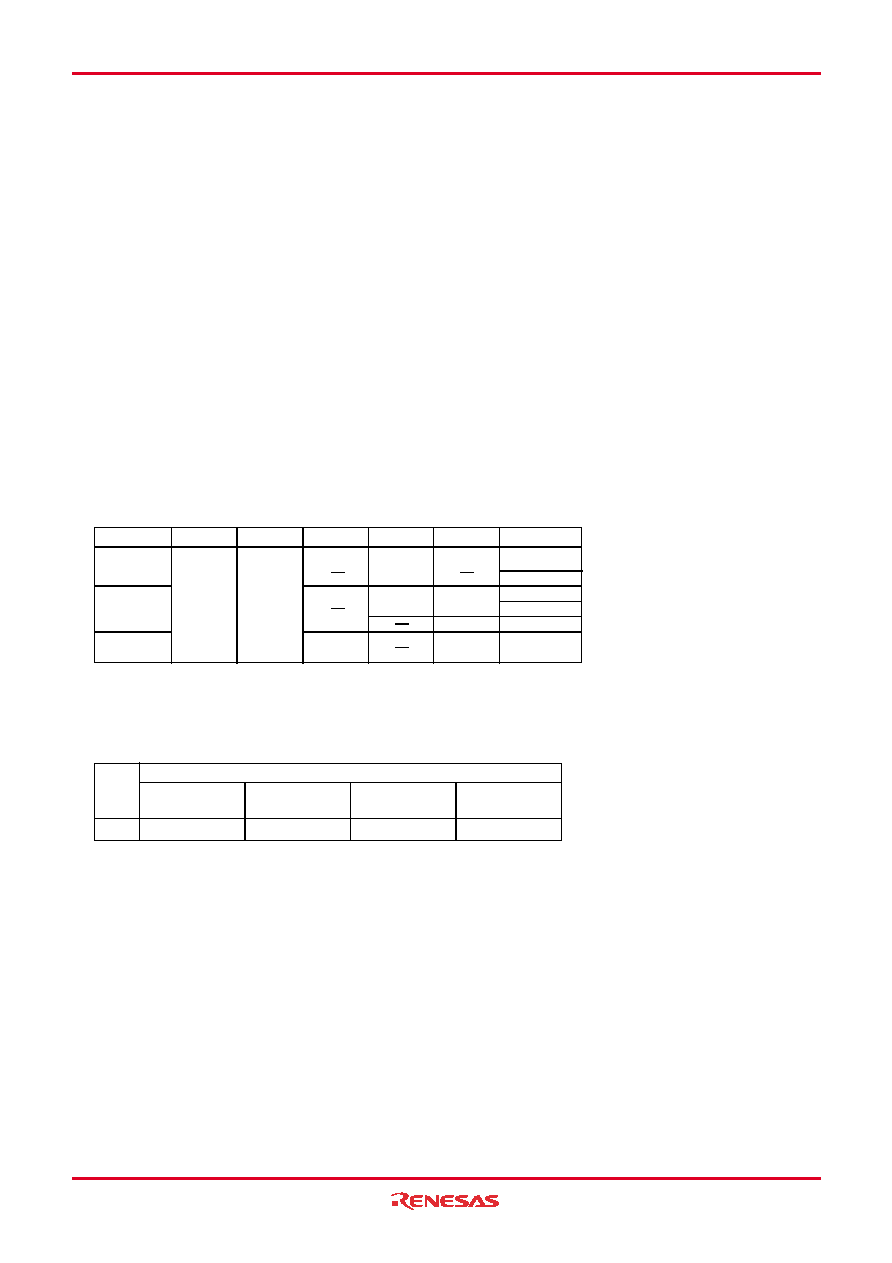- 您現(xiàn)在的位置:買賣IC網(wǎng) > PDF目錄45013 > M30280M6-XXXHP 16-BIT, MROM, 20 MHz, MICROCONTROLLER, PQFP64 PDF資料下載
參數(shù)資料
| 型號: | M30280M6-XXXHP |
| 元件分類: | 微控制器/微處理器 |
| 英文描述: | 16-BIT, MROM, 20 MHz, MICROCONTROLLER, PQFP64 |
| 封裝: | 10 X 10 MM, 0.50 MM PITCH, PLASTIC, LQFP-64 |
| 文件頁數(shù): | 357/415頁 |
| 文件大?。?/td> | 2591K |
| 代理商: | M30280M6-XXXHP |
第1頁第2頁第3頁第4頁第5頁第6頁第7頁第8頁第9頁第10頁第11頁第12頁第13頁第14頁第15頁第16頁第17頁第18頁第19頁第20頁第21頁第22頁第23頁第24頁第25頁第26頁第27頁第28頁第29頁第30頁第31頁第32頁第33頁第34頁第35頁第36頁第37頁第38頁第39頁第40頁第41頁第42頁第43頁第44頁第45頁第46頁第47頁第48頁第49頁第50頁第51頁第52頁第53頁第54頁第55頁第56頁第57頁第58頁第59頁第60頁第61頁第62頁第63頁第64頁第65頁第66頁第67頁第68頁第69頁第70頁第71頁第72頁第73頁第74頁第75頁第76頁第77頁第78頁第79頁第80頁第81頁第82頁第83頁第84頁第85頁第86頁第87頁第88頁第89頁第90頁第91頁第92頁第93頁第94頁第95頁第96頁第97頁第98頁第99頁第100頁第101頁第102頁第103頁第104頁第105頁第106頁第107頁第108頁第109頁第110頁第111頁第112頁第113頁第114頁第115頁第116頁第117頁第118頁第119頁第120頁第121頁第122頁第123頁第124頁第125頁第126頁第127頁第128頁第129頁第130頁第131頁第132頁第133頁第134頁第135頁第136頁第137頁第138頁第139頁第140頁第141頁第142頁第143頁第144頁第145頁第146頁第147頁第148頁第149頁第150頁第151頁第152頁第153頁第154頁第155頁第156頁第157頁第158頁第159頁第160頁第161頁第162頁第163頁第164頁第165頁第166頁第167頁第168頁第169頁第170頁第171頁第172頁第173頁第174頁第175頁第176頁第177頁第178頁第179頁第180頁第181頁第182頁第183頁第184頁第185頁第186頁第187頁第188頁第189頁第190頁第191頁第192頁第193頁第194頁第195頁第196頁第197頁第198頁第199頁第200頁第201頁第202頁第203頁第204頁第205頁第206頁第207頁第208頁第209頁第210頁第211頁第212頁第213頁第214頁第215頁第216頁第217頁第218頁第219頁第220頁第221頁第222頁第223頁第224頁第225頁第226頁第227頁第228頁第229頁第230頁第231頁第232頁第233頁第234頁第235頁第236頁第237頁第238頁第239頁第240頁第241頁第242頁第243頁第244頁第245頁第246頁第247頁第248頁第249頁第250頁第251頁第252頁第253頁第254頁第255頁第256頁第257頁第258頁第259頁第260頁第261頁第262頁第263頁第264頁第265頁第266頁第267頁第268頁第269頁第270頁第271頁第272頁第273頁第274頁第275頁第276頁第277頁第278頁第279頁第280頁第281頁第282頁第283頁第284頁第285頁第286頁第287頁第288頁第289頁第290頁第291頁第292頁第293頁第294頁第295頁第296頁第297頁第298頁第299頁第300頁第301頁第302頁第303頁第304頁第305頁第306頁第307頁第308頁第309頁第310頁第311頁第312頁第313頁第314頁第315頁第316頁第317頁第318頁第319頁第320頁第321頁第322頁第323頁第324頁第325頁第326頁第327頁第328頁第329頁第330頁第331頁第332頁第333頁第334頁第335頁第336頁第337頁第338頁第339頁第340頁第341頁第342頁第343頁第344頁第345頁第346頁第347頁第348頁第349頁第350頁第351頁第352頁第353頁第354頁第355頁第356頁當(dāng)前第357頁第358頁第359頁第360頁第361頁第362頁第363頁第364頁第365頁第366頁第367頁第368頁第369頁第370頁第371頁第372頁第373頁第374頁第375頁第376頁第377頁第378頁第379頁第380頁第381頁第382頁第383頁第384頁第385頁第386頁第387頁第388頁第389頁第390頁第391頁第392頁第393頁第394頁第395頁第396頁第397頁第398頁第399頁第400頁第401頁第402頁第403頁第404頁第405頁第406頁第407頁第408頁第409頁第410頁第411頁第412頁第413頁第414頁第415頁

M16C/28 Group
Under development Preliminary specification
Specifications in this manual are tentative and subject to change.
5. Reset
Rev.0.60 2004.02.01
page 28 of N
REJ09B0047-0060Z
5.5.1 Voltage Detection Interrupt
A voltage down detection interrupt request is generated when the input voltage at the VCC pin rises to Vdet4
or more or drops below Vdet4 while the D40 bit in the D4INT register is set to “1” (voltage down detection
interrupt enable). The voltage down detection interrupt shares the interrupt vector with the watchdog timer
interrupt and oscillation stop, re-oscillation detection interrupt.
To use the voltage down detection interrupt to get out of stop mode, set the D41 bit in the D4INT register to
“1” (enable).
The D42 bit in the D4INT register becomes “1” when passing through Vdet4 is detected after the voltage
inputted to the VCC pin is up or down.
A voltage down detection interrupt is generated when the D42 bit changes state from “0” to “1”. The D42 bit
needs to be cleared to “0” by software. However, when D41 bit is “1” and the microcontroller is in stop
mode, if the voltage down detection interrupt occurs (due to voltage applied at VCC increases, passing
through Vdet4), the microcontroller awakes from stop mode with no regard to the status of the D42 bit.
Table 5.5.1.1 shows the voltage down detection interrupt request generation conditions.
It is possible to set the sampling clock detecting that the voltage applied to the VCC pin has passed through
Vdet4 with the DF1 to DF0 bits of D4INT register. Table 5.5.1.2 shows sampling clock periods.
Table 5.5.1.1. Voltage Detection Interrupt Request Generation Conditions
D41 bit
VC27 bit
operation mode
D40 bit
D42 bit
CM02 bit
VC13 bit
Normal
operation
mode(Note 1)
Wait mode
(Note 2)
Stop mode
(Note 2)
Note 1: The status except the wait mode and stop mode is handled as the normal mode.(Refer to “Clock generating circuit”)
Note 2: Refer to “Limitations on stop mode”, “Limitations on wait mode”.
Note 3: An interrupt request for voltage reduction is generated a sampling time after the value of the VC13 bit has changed.
Refer to the “Figure 5.5.1.1.2.2.Voltage Down Detection Interrupt Generation Circuit Operation Example” for
details.
0 to 1
1
0
1
0
1 to 0
0 to 1
1 to 0
0 to 1
1
(Note 3)
– : “0”or “1”
Table 5.5.1.2. Sampling Clock Periods
CPU
clock
(MHz)
DF1 to DF0=00
(CPU clock divided by 8)
Sampling clock (s)
16
3.0
6.0
12.0
24.0
DF1 to DF0=01
(CPU clock divided by 16)
DF1 to DF0=10
(CPU clock divided by 32)
DF1 to DF0=11
(CPU clock divided by 64)
5.5.1.1 Precautions
5.5.1.1.1. Limitations on Stop Mode
Before setting the CM10 bit in the CM1 register to “1”(stop mode), be sure to clear the CM02 bit in the
CM0 register to “0” (do not stop the peripheral function clock). If the CM10 bit in the CM1 register is set to
“1” (stop mode) when the VC13 bit in the VCR1 register is “1” (VCC
≥ Vdet4) while the VC27 bit in the
VCR2 register is “1” (voltage down detection circuit enable) and the D40 bit in the D4INT register is “1”
(voltage down detection interrupt enable) and D41 bit in the D4INT register is “1” (voltage down detection
interrupt is used to get out of stop mode), a voltage down detection interrupt is immediately generated,
causing the microcomputer to exit stop mode.
In systems where the microcomputer enters stop mode when the input voltage at the VCC pin drops below
Vdet4 and exits stop mode when the input voltage rises to Vdet4 or more, make sure the CM10 bit is set
to “1” when VC13 bit is “0” (VCC < Vdet4).
相關(guān)PDF資料 |
PDF描述 |
|---|---|
| M30281F6VHP | 16-BIT, FLASH, 20 MHz, MICROCONTROLLER, PQFP64 |
| M30281F6THP | 16-BIT, FLASH, 20 MHz, MICROCONTROLLER, PQFP64 |
| M30280M4T-XXXHP | 16-BIT, MROM, 20 MHz, MICROCONTROLLER, PQFP64 |
| M30281M6-XXXHP | 16-BIT, MROM, 20 MHz, MICROCONTROLLER, PQFP64 |
| M30281M4V-XXXHP | 16-BIT, MROM, 20 MHz, MICROCONTROLLER, PQFP64 |
相關(guān)代理商/技術(shù)參數(shù) |
參數(shù)描述 |
|---|---|
| M30280M8-XXXHP | 制造商:RENESAS 制造商全稱:Renesas Technology Corp 功能描述:16-BIT SINGLE-CHIP MICROCOMPUTER M16C FAMILY / M16C/Tiny SERIES |
| M30280MA-XXXHP | 制造商:RENESAS 制造商全稱:Renesas Technology Corp 功能描述:16-BIT SINGLE-CHIP MICROCOMPUTER M16C FAMILY / M16C/Tiny SERIES |
| M30280MC-XXXHP | 制造商:RENESAS 制造商全稱:Renesas Technology Corp 功能描述:16-BIT SINGLE-CHIP MICROCOMPUTER M16C FAMILY / M16C/Tiny SERIES |
| M30281F6HP | 制造商:Renesas Electronics Corporation 功能描述:IC,microcontroller,M16C/Tiny,1 |
| M30281F6HP D3 | 制造商:Renesas Electronics Corporation 功能描述: |
發(fā)布緊急采購,3分鐘左右您將得到回復(fù)。